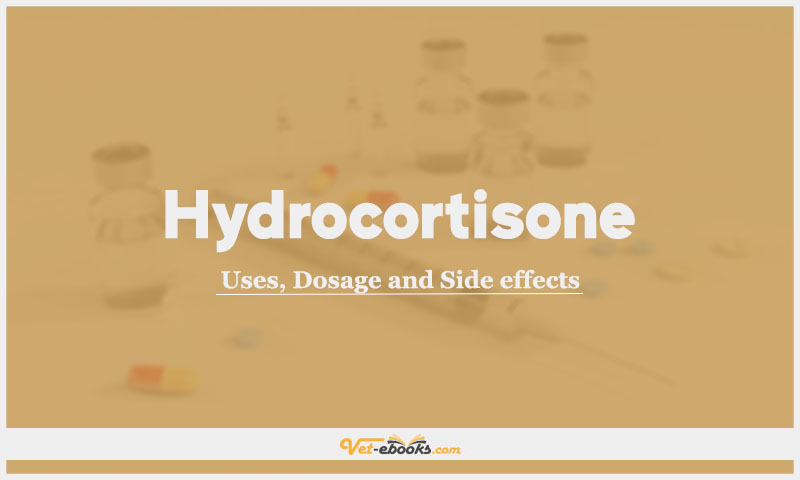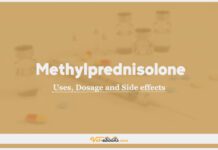Hydrocortisone: Uses, Dosage and Side Effects

Overview
- Alters the transcription of DNA, leading to alterations in cellular metabolism.
- It has both glucocorticoid and mineralocorticoid activity
Uses of Hydrocortisone
- Topical anti-inflammatory drug.
- Early management of acute hypoadrenocorticism.
- Treatment of critical illness-related corticosteroid insufficiency (CIRCI) has been described in dogs and cats with fluid-loaded, vasopressor-resistant septic shock.
Dose of Hydrocortisone in Dogs and Cats
Dogs:
- Topically: apply a thin layer of cream to the affected area q6–12h.
- Hypoadrenocorticism: 0.5 mg/kg/h i.v. by constant rate infusion, in acute Addisonian crisis and 0.125 mg/kg p.o. q12h for maintenance.
- Anti-inflammatory: 0.5 mg/kg p.o. q12h.
Cats:
- Topical use as for dogs.
- Its use in feline hypoadrenocorticism has not been documented.
Drug Dosage Calculator
You Should Give:
Side Effects of Hydrocortisone in Dogs and Cats
- Prolonged use of glucocorticoids suppresses the hypothalamic-pituitary axis and causes adrenal atrophy.
- Excessively rapid correction of hyponatraemia in cases of acute hypoadrenocorticism may cause brain damage and so, in severely hyponatremic animals, initial
doses should be reduced by 50% or postponed until the rate of correction using saline has been established. - Catabolic effects of glucocorticoids lead to weight loss and cutaneous atrophy.
- Iatrogenic hyperadrenocorticism may develop (PU/PD, elevated liver enzymes).
- Vomiting and diarrhoea, or GI ulceration may develop.
- Glucocorticoids may increase urine glucose levels and decrease serum T3 and T4 values.
- Impaired wound healing and delayed recovery from infections may be seen.
Contraindications of Hydrocortisone in Dogs and Cats
- Do not use in pregnant animals.
- Contraindicated in patients with renal disease and diabetes mellitus
Some Notes:
- Increased risk of GI ulceration if used concurrently with NSAIDs.
- Glucocorticoids antagonize the effect of insulin.
- Antiepileptic drugs (phenobarbital) may accelerate the metabolism of corticosteroids
- Antifungals (e.g. itraconazole) may decrease the metabolism of corticosteroids.
- There is an increased risk of hypokalaemia when corticosteroids are used with acetazolamide, amphotericin and potassium-depleting diuretics (furosemide, thiazides).
Tip
Do You Want To Increase Your Veterinary Knowledge and Practical Skills?
You Can Now Browse and Download +3000 Books For Veterinary Professionals & Students Online.
Download Veterinary Books












